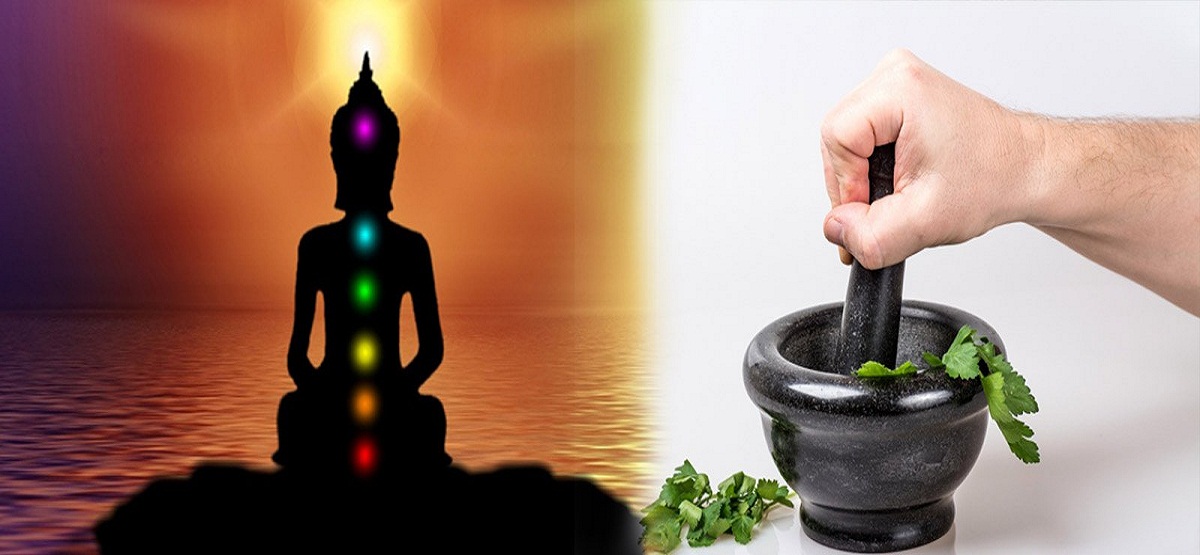Ayurved
What is Ayurved ?
Ayurved literally means "Science of life and longevity" and is considered to be the traditional system of medicine of India. Ayurved is a science in the sense that it is a complete system. It is a qualitative, holistic science of health and longevity, a philosophy and system of healing the whole person, body and mind.
The origin of this system goes back to a far past, in which philosophy and medicine were not separated. Therefore, philosophical views have strongly influenced the Ayurvedic way of thinking. Historians have not pin-pointed the exact time Ayurved came into being. Most agree that Ayurvedic classical texts were written in India between 3,500 and 5,000 years ago, though some suggest an even longer history.
Legend :
The origins of this system of course are lost in time. In legend it is said to have been taught by the creator, Brahma, to the Prajapati Daksha. (One of the lords of the animals) who taught it in turn to the divine twins called the Ashwinikumars. Ashwinikumars are the heavenly healers. They taught Indra, the chief of the shining ones.
The personages mentioned were deities of early Vedic times. When mankind started suffering from various diseases the wise men like Bharadvaja learnt from Indra the knowledge of medicine. Gradually the huge amount of knowledge accumulated was divided systematically into different branches.
Samprapti the Disease Process(Pathology)
Under normal conditions, the doshas, dhatus and malas correspond to certain standards regarding their quantity, quality and function. However, this situation is not static, and due to several endogenous and erogenous factors, the doshas may become unbalanced, resulting in disease.Every disease is related to an imbalance of the doshas.
Other coherent factors can be : The disturbance of the biological factors (agnis), the formation and accumulation of undigested nutrients (ama), obstruction of the body channels (shrotorodha), and a disturbed assimilation in the tissues. Ayurved gives us a model to look at each individual as a unique makeup of the three doshas (Prakruti) and thereby design treatment protocols that specifically address a persons health challenges. When any of the doshas ( Vata, Pitta or Kapha ) become imbalance, Ayurved will suggest specific lifestyle and nutritional guidelines to assist the individual in reducing or increasing the doshas that has become imbalance. If toxins in the body are abundant, then a cleansing process known as Panchakarma is recommended to eliminate these unwanted toxins.
Few Examples :
Obesity :
Mainly due to absence of physical activity. Other causes may be sleeping during the day, intake of Kapha - increasing foods, finally results in the accumulation of fat. These block the channels of nutrition. This blocking causes an increase in hunger because the body does not get nutrition.
Rheumatism :
Eating foods which are incompatible, lack of physical exercise in general, doing exercise particularly after eating fatty foods , incorrect use of purgatives, causes improper digestion. The half digested food called Ama associates itself with Vata and moves about. It fills the seats of kapha, and blocks the transport channels of the body. This blocking of channels produces weakness of the heart, which is the seat of the disease. This results in loss of strength, feeling of heaviness, stiffness of the body , and small and big joints alike.
Indigestion/dyspepsia :
Taking excess of water, taking small/large quantities of food at odd times, suppression of the natural functions of the body, loss of sleep at night and sleeping during the daytime, causes gastric fire (Jatharagni) responsible for the digestion and the absorption of nutritious substances weak.














